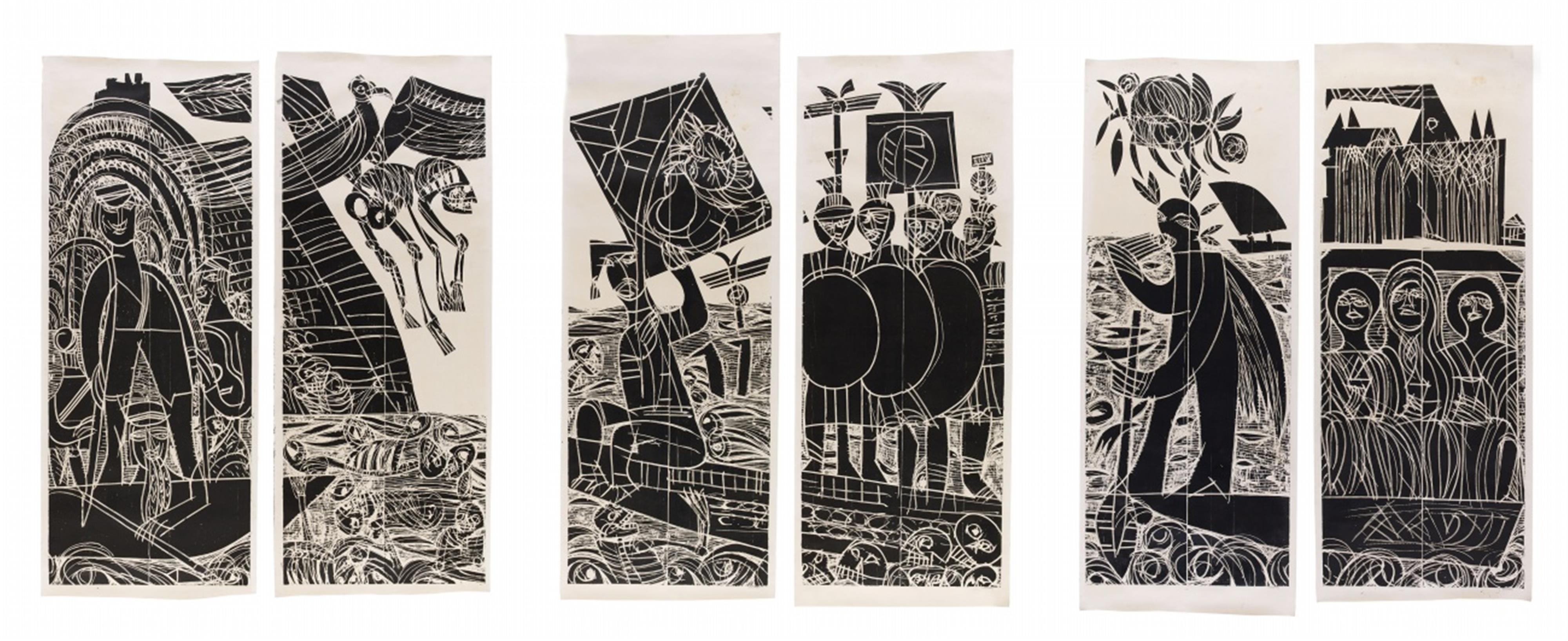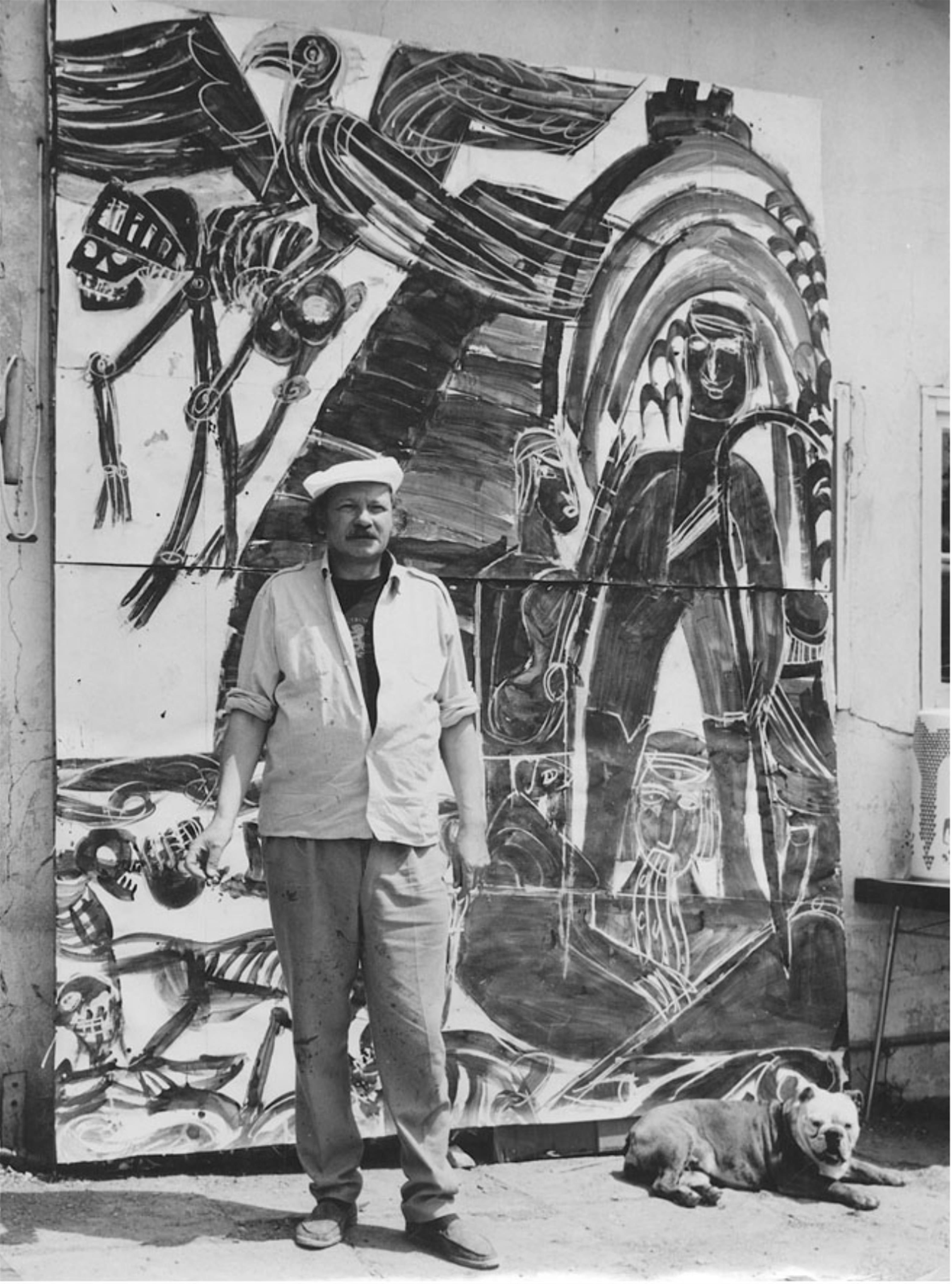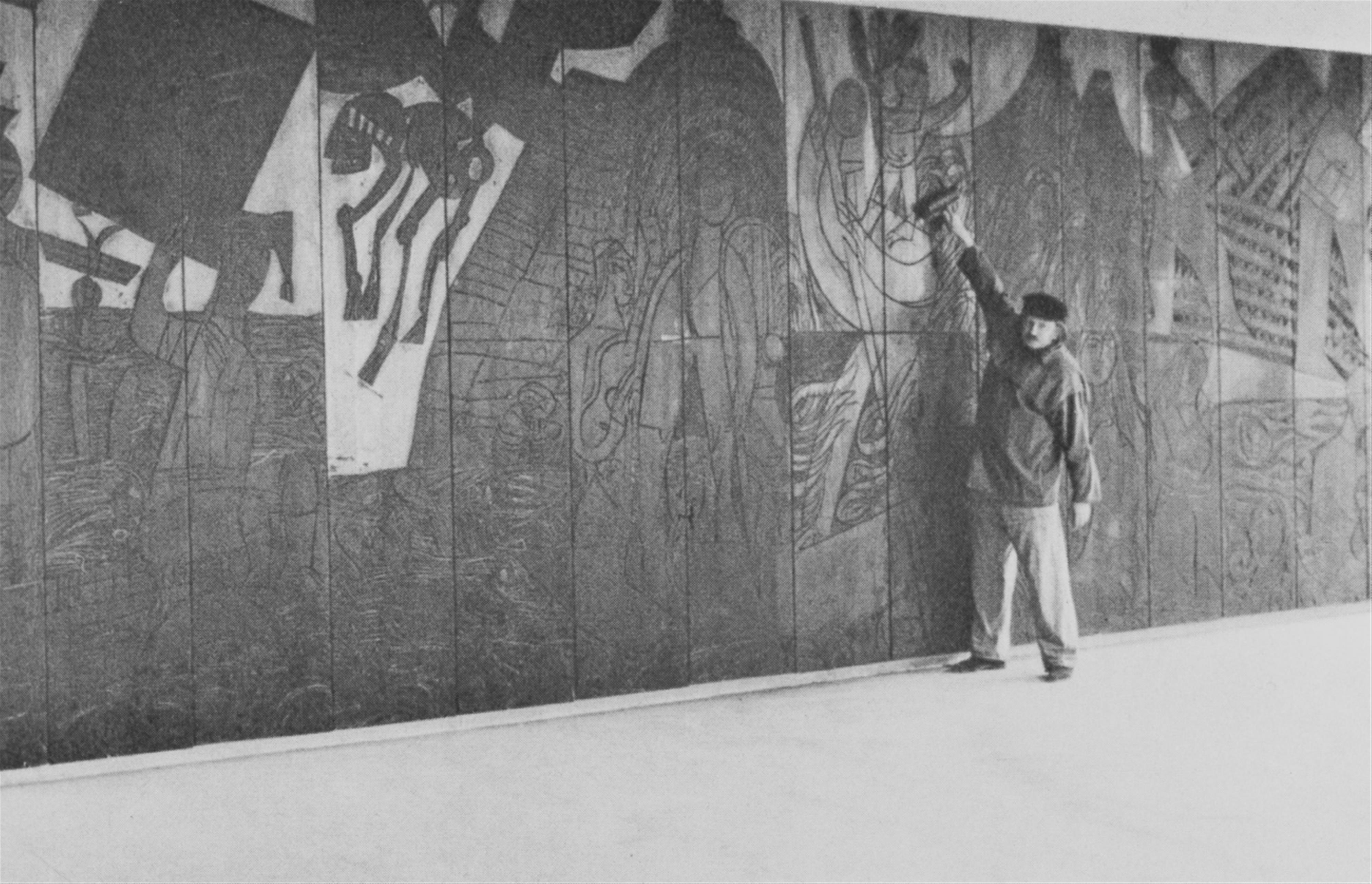H.A.P Grieshaber
Die Lorelei. Die Legion. CCA. Aus: Der Rhein
1964
6 woodcuts on firm hand-made paper From 294 x 117 cm to 300 x 117.5 cm (from 311 x 126.5 cm to 330.5 x 126 cm) 4 sheets signed. Each inscribed with consecutive sheet numbers '6' to '11'. One of only 2 proofs. 6 of the series "Der Rhein" comprising a total of 11 sheets, 2 sheets each make up one motif. Printed by Gerhard Köhler, Kartung near Karlsruhe. The printing blocks are exhibited as a woodblock mural in the smoker's foyer of the Bonn opera house. - Slightly irregularly minimally browned, partially stained in upper area.
The name of HAP Grieshaber stands for the epitome of the woodcut, even if he did occasionally flee to the seemingly simpler techniques of watercolour and oil painting, creating stage sets and costumes, or using his wood blocks to present himself as a sculptor at documenta III, for example. The woodcutter Grieshaber did not just continue to develop the woodcut, the medium of modern art since the Expressionists of the “Brücke” group; instead, he used series like the one here to experiment with fantastically dense drawings on monumental sheets of paper that cover entire surfaces, elevating the woodcut to the level of painting.
According to the catalogue of the artist's work, only two impressions exist of the complete series of “Der Rhein”, a six-part wall piece that is three metres tall and over thirteen metres long and is assembled out of five wood blocks, each featuring two elements and a single section. Because of the oversized format, no printing press was used: the paper was laid on top of the inked wood block, and bone folders and spoons were used to rub it through by hand. “I was supposed to design a tapestry [for the Bonn municipal theatre, now the opera house]. But I didn't want a tapestry. In this case I felt that - in the smoke of the foyer - it wouldn't necessarily be the right thing. Besides, I immediately had another idea. And I was happy that it was accepted. The Rhine flowed there. The building stands right next to its banks. And I thought: I'll do something with planks. With heavy, solid planks”, explained the artist in a conversation with Maria Wetzel (cited in “Brusberg Dokumente”, no. 34, Berlin 1994, p. 27). Grieshaber created a wood-block wall made out of redwood and measuring over thirteen metres in width; the motifs are cut into this surface and recount the course of the Rhine from its source, past various regions and towns and on to the sea, visualising fairy tales, myths and legends along the way. No other German river has been the subject of so many poems and songs as the Rhine: these include the legendary Rhinegold hoard of the Nibelungs, the “Loreley” poem by Clemens Brentano, the poem of the same name by Heinrich Heine, the hymn to the Rhine by Friedrich Hölderlin and, finally “Das versunkene Schloss” (The sunken palace) by Friedrich Schlegel. And it was not just with the “Wars of Liberation” against Napoleon that the hymns, songs and poems took on a political and national tone. To a certain extent, Grieshaber singles out themes as is suits him: he begins his powerful selection with a personification of the river's source, turns his attention to viniculture and ferries, is unable to avoid dealing with the slate rock formation of the Loreley and the stories surrounding it and, finally, celebrates the ancient Roman town of Cologne. Grieshaber delineates his narrative in striking detail and - in contrast to the broad and gestural forms otherwise typical of his work - he uses his woodcutting tools to carve fine, almost Dürer-like lines into the surface of the wood to depict the events below and above the surface of the water. This leads to a complex treatment of the Rhine featuring many narrative layers. Years later, in 1982, Anselm Kiefer would also give shape to this theme in large-format woodcuts, although he arrives at an entirely different result in relating his perspective on this river loaded with myth and history. A complete woodcut series of Grieshaber's “Rhein” can be found in the Hamburger Kunsthalle; three episodes from the monumental series of another impression purchased directly from the artist have now become available here.
Catalogue Raisonné
Fürst 64/111, 112, 113
Provenance
Acquired directly from the artist; in private possession since, North Germany
Literature
HAP Grieshaber. Der Rhein, mit Texten von Heinrich Böll u. Albrecht Fabri, ed. by Galerie Der Spiegel, Cologne 1965; Karl-Heinz Kukla/Horst Zimmermann, HAP Grieshaber. Holzschnitte, exhib. cat. Zentrum für Kunstausstellungen der DDR, Kunsthalle Rostock, Berlin 1977, P. 147, no. 600-602; Willem Sandberg/Margot Fürst, Grieshaber. Der betroffene Zeitgenosse, Stuttgart 1978, p. 299, with illus. of the prints at Kunsthalle Hamburg; Ursel und Jürgen Zänker, Kunst und Altertum am Rhein. Bauen im Bonner Raum 49-69. Führer des Rheinischen Landesmuseums in Bonn, ed. by Landschaftsverband Rheinland, p. 170; Thomas Kliemann, Zeitlos schön, in: Bonner General-Anzeiger dated 4 May 2015; Stadttheater, in the series: Architekturführer der Werkstatt Baukultur Bonn, vol. 3, Bonn 2015, p. 32 ff.






